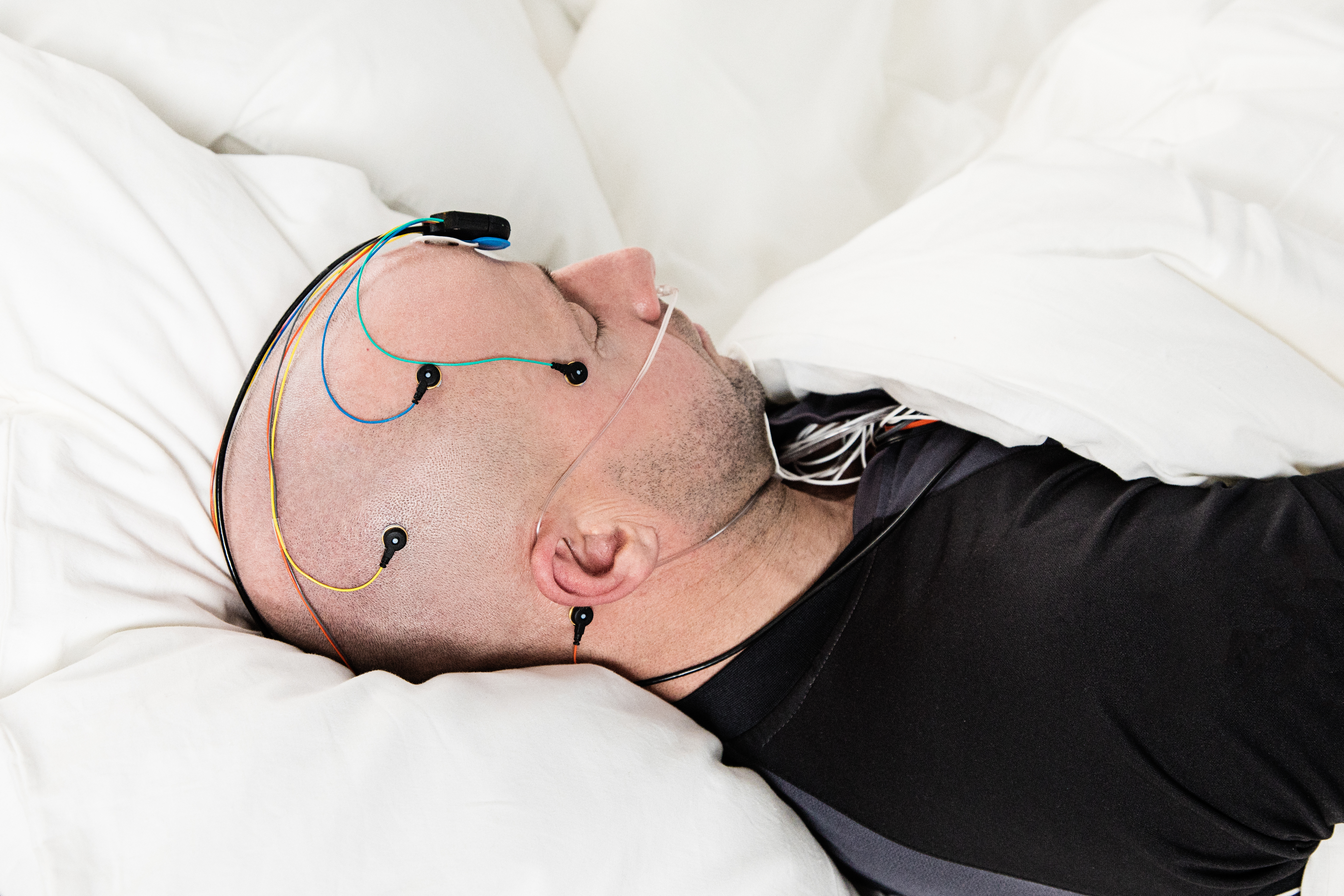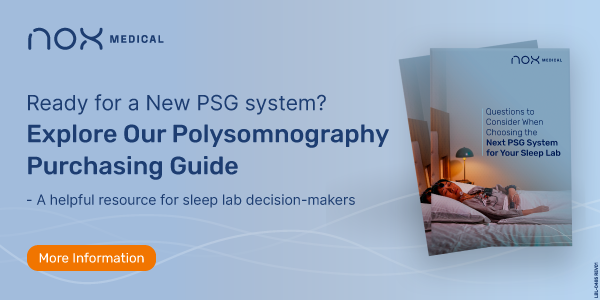External headboxes during sleep studies can now become a thing of the past with a head cable that comes with the Nox A1s full PSG system, designed with all the necessary EEG channels in one single cable.
In the world of sleep medicine and science, sleep lab managers are always on the lookout for new and innovative ways to streamline sleep diagnostics to better understand the complexities of the human brain during sleep.
A version of the traditional sleep study headbox with wireless connectivity, and a lightweight and intuitive feel, the Nox A1s head cable takes sleep diagnostics to a new level by pushing the limits of blending accurate data with a comfortable experience during A1s polysomnography (PSG) sleep tests.
A system that records the same electroencephalogram (EEG) signals of a traditional headbox of an in-lab PSG sleep study, but with less hassle, the Nox A1s head cable is challenging the status quo of what it means to undergo a sleep test.
Let’s Make the Traditional Sleep Study Headbox Obsolete
Powerful enough for diagnostic studies in the sleep lab or in patient’s homes, the Nox A1s head cable is a departure from the traditional headbox, but still meets all the American Academy of Sleep Medicine’s (AASM) standards for full PSG testing. The design of the Nox A1s EEG head cable incorporates a lightweight feel and wireless connectivity so that patients can sleep comfortably without being tethered to the bedside.
During Nox A1s sleep tests, there is nothing that is connected or plugged in that is tethering the patient to the nightstand. If they need to go to the restroom, patients can continue wearing the testing equipment with no need to unplug anything or disturb the electrode connections. All the while, the Nox device is also capable of transmitting data via Bluetooth during an online sleep study.
The wires are only as long as they need to be, so there is no tugging or weight on the patient’s head. An intuitive hookup process means that sleep technologists can avoid the headaches of tangled wires and the potential inaccuracies of sleep study artifacts, according to Byron Jamerson, RPSGT, a product specialist at Nox Medical.
High-Quality Signals with More Ease
A typical pain point for sleep technologists is the risk of head cable wires tangling during their patient’s sleep studies. With the Nox A1s, there is almost no risk of the wires tangling during the night. Hookup time and labor are also greatly reduced.
Each of the ten Nox A1s electrodes is connected to the patient’s skin and then flows to one connecting point on the patient’s head. Instead of individually plugging in ten electrodes, the clinician only needs to plug in one head cable connection. The head cable connection then flows to the Nox A1s device, which is worn on the chest.
A Pristine Sleep Study Recording
Due to the short wires, there is a very limited opportunity for any artifact to be introduced during sleep studies, explains Jamerson.
With a traditional EEG electrode, long electrode wires run across the bed. Due to the wires traveling over the surface of the bed to connect with the headbox at the bedside, there could be more artifact, according to Jamerson.
“With our device, the wire is running from the head down to the chest, and then it’s digitized. Once it’s digitized, right there on the chest, then it’s impervious to any of the AC artifacts or anything like that. So we’re not running those leads a distance across other things. This helps make a cleaner recording and it helps make a higher quality recording,” says Jamerson.
One other major advantage of the Nox A1s system is its portability. Traditional sleep studies require patients to spend a night in a sleep lab, where they are connected to a variety of cumbersome wires. With the Nox A1s, patients can sleep in the sleep lab or in their own bed, in their own home, without the need for invasive monitoring equipment.
Overall, the Nox A1s PSG system is a game-changer in the field of sleep science and medicine. Its portability and versatility make it an indispensable tool for researchers and sleep clinicians alike. As this technology continues to advance, Nox Medical hopes to continue to contribute even more groundbreaking innovations that may help sleep professionals guide their patients to the highest quality care.
The following list compiles selected publications where A1 or A1s devices were used as part of the protocol:
Ioan I, Weick D, Schweitzer C, Guyon A, Coutier L, Franco P. Feasibility of parent-attended ambulatory polysomnography in children with suspected obstructive sleep apnea. J Clin Sleep Med. 2020 Jul 15;16(7):1013-1019. doi: 10.5664/jcsm.8372.
Russo K, Greenhill J, Burgess S. Home (Level 2) polysomnography is feasible in children with suspected sleep disorders. Sleep Med. 2021 Dec;88:157-161. doi: 10.1016/j.sleep.2021.10.024.
Yoon, Dae & Hong, Il-Hee & Baik, Inkyung & Shin, Hyun-Woo. (2019). Evaluation of the feasibility and preference of Nox-A1 type 2 ambulatory device for unattended home sleep test: a randomized crossover study. Sleep and Biological Rhythms. 17. 10.1007/s41105-019-00213-4.
For a full list of research involving the Nox A1s or other Nox products, please visit our Research & Publications page.
Topic: Industry News






